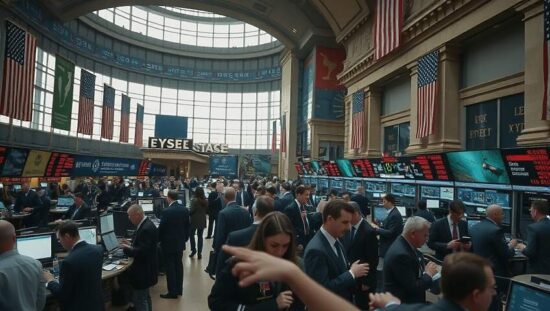The German DAX index experienced a significant downturn Friday, closing at 23,831 points, a 1.8% decrease from the previous day’s close. This marked a continuation of a fragile trading week, exacerbated by a confluence of geopolitical and economic anxieties. The initial weakness persisted throughout the day, with only a marginal recovery in the afternoon offering a brief respite.
Analysts attribute the decline primarily to the ongoing US government shutdown, which has severely curtailed the release of crucial economic data regarding inflation, employment and overall economic health. This lack of transparency appears to be fueling a precarious optimism among investors, who are projecting at least one and likely two, interest rate cuts by the Federal Reserve in the coming months. Christine Romar, Head of Europe at CMC Markets, characterized this widespread expectation as “clinging to a straw that is notoriously not the greatest stability.
Adding to the volatility, President Trump’s recent threat to impose a 100% tariff on rare earth exports from China, should China maintain its restrictions, initially triggered market apprehension. The subsequent reassurance from the White House confirming a planned meeting between Trump and his Chinese counterpart in late October managed to avert an immediate sell-off, but underscored the fragility of investor sentiment.
However, the underlying pressure remains potent. A resurgence of fears surrounding potential banking sector instability in the US amplified the downward trend. Two regional banks were compelled to declare substantial write-downs on distressed loans, evoking uncomfortable parallels to the collapse of Silicon Valley Bank two years ago. Romar’s commentary highlighted a particularly troubling aspect of the current situation: unlike the previous crisis where the Federal Reserve possessed clear mechanisms for intervention, the extent of potential vulnerabilities hidden within bank balance sheets, both official and unofficial, remains largely speculative. “How many loans are in which bank’s balance sheets and what are they worth, is simply guesswork at this point” she stated.
Despite the broader market downturn, notable performance variations were observed. Continental AG shares led the Frankfurt stock exchange, boosted by surprisingly strong quarterly results. Beiersdorf and Brenntag followed closely. Conversely, Deutsche Bank and Rheinmetall were at the bottom of the performance table.
In commodity markets, gas prices edged slightly lower, falling to €32 per megawatt-hour for November delivery, representing a 2% decrease. This translates to an estimated consumer price of at least 8-9 cents per kilowatt-hour for sustained pricing. Oil prices, however, increased, with Brent crude reaching $61.21 per barrel, showing a modest gain of 0.3% from the previous close.
The Euro also weakened, trading at $1.1665, indicating a corresponding dollar value of €0.8573. The overall market performance paints a picture of heightened uncertainty and a growing dependence on short-term reassurances to manage widespread anxieties regarding US fiscal and monetary policy, geopolitical tensions and the stability of the financial system.





